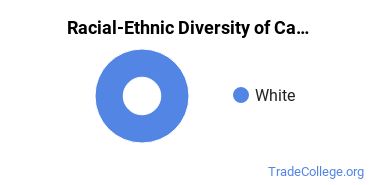Find Trade Colleges
Carpentry/Carpenter at Laney College
Laney College is located in Oakland, California and has a total student population of 9,225. During the the most recent year for which data is available, 1 student received their associate's degree in carpentry.
Want to know more about the career opportunities in this field? Check out the Careers in Carpentry/Carpenter section at the bottom of this page.
Laney College Carpentry/Carpenter Degrees Available
- Basic Certificate in Carpentry (Less Than 1 Year)
- Undergrad Certificate in Carpentry (1 - 4 Years)
- Associate’s Degree in Carpentry
Laney College Carpentry/Carpenter Rankings
Note: While rankings may be a good starting point when you're researching a school, they don't necessarily highlight all of a school's strengths. Don't forget to check out the other details that are available for a school to see if it has what you're looking for in a program.
Carpentry Student Demographics at Laney College
Take a look at the following statistics related to the make-up of the carpentry majors at Laney College.
Laney College Carpentry/Carpenter Associate’s Program

The following table and chart show the race/ethnicity for students who recently graduated from Laney College with a associate's in carpentry.

| Race/Ethnicity | Number of Students |
|---|---|
| Asian | 0 |
| Black or African American | 0 |
| Hispanic or Latino | 0 |
| White | 1 |
| International Students | 0 |
| Other Races/Ethnicities | 0 |
Careers That Carpentry Grads May Go Into
A degree in carpentry can lead to the following careers. Since job numbers and average salaries can vary by geographic location, we have only included the numbers for CA, the home state for Laney College.
| Occupation | Jobs in CA | Average Salary in CA |
|---|---|---|
| Carpenters | 100,570 | $59,860 |
| Construction Trades and Extraction Worker Supervisors | 55,920 | $82,460 |
References
*The racial-ethnic minorities count is calculated by taking the total number of students and subtracting white students, international students, and students whose race/ethnicity was unknown. This number is then divided by the total number of students at the school to obtain the racial-ethnic minorities percentage.
More about our data sources and methodologies.
